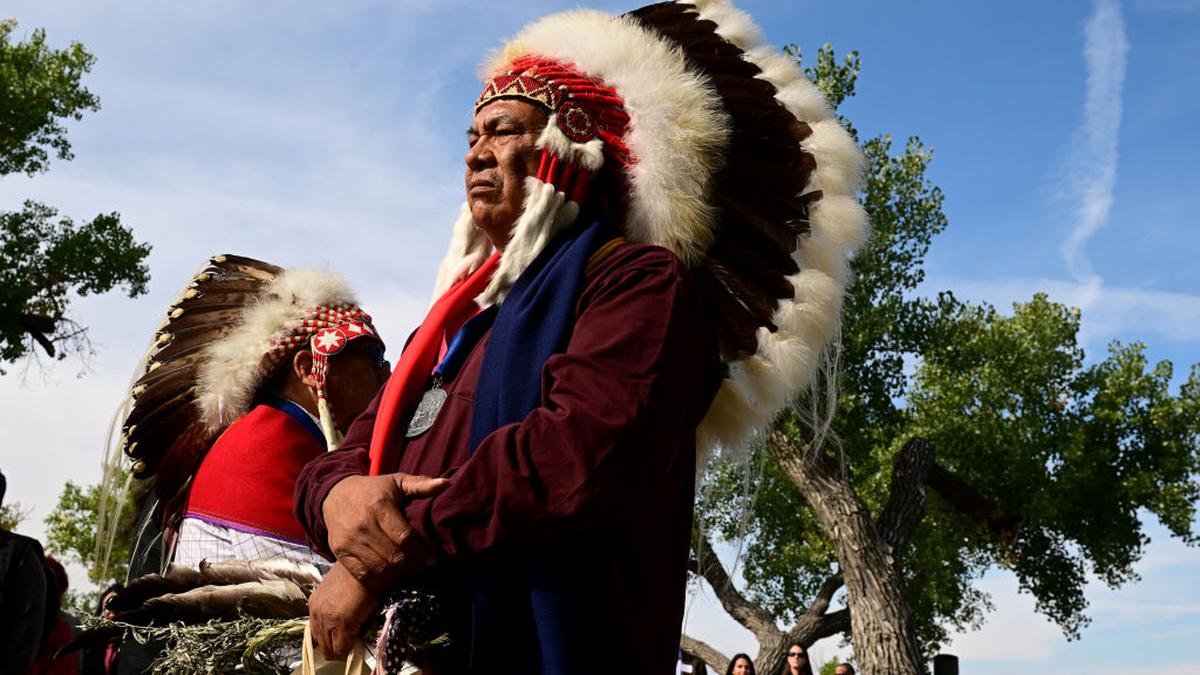
Scars of the past | Review of Tommy Orange’s Wandering Stars, longlisted for Booker Prize 2024
The Hindu
Wandering Stars by Tommy Orange explores Native American history and present-day struggles with poetic precision and cultural depth.
“Kill the Indian, save the man” — that’s what Brigadier-General Richard Henry Pratt (1840-1924), superintendent of the Carlisle Indian Industrial School, meant by Americanising Native Indians. Under the garb of cultural assimilation, Pratt advised methods to “civilise” the “savage” Native Indians, a licensed cultural erasure supported by the American government. “More years at war with Indians than as a nation. Three hundred and thirteen,” writes Tommy Orange, an author of Cheyenne and Arapaho descent, in the prologue to his 2024 Booker-longlisted novel Wandering Stars.
Divided into three parts, the novel — part prequel, non-sequel sequel to his award-winning debut novel There, There (2018) — features some of the principal characters (Jacquie Red Feather, Opal Viola Victoria Bear Shield, etc.) from its predecessor. However, Wandering Stars is comparatively epic in scope and ambitious in its execution. It spans a nearly two-century period, tracing the lives of six generations of Native Americans, beginning with the story of Jude Star.
A mute, Star was taken, “shackled in iron chains”, to be “civilised” by Pratt. He notes the following about the Sand Creek massacre of the Cheyenne and Arapaho people by the U.S. Army in 1864: “Everything that had been before what happened at Sand Creek went back inside the earth, deep into the singular stillness of land and death.” This is a glimpse into Orange’s technique of fusing creative non-fiction elements into his imaginative retelling of the past.
Tess Gunty, author of The Rabbit Hutch (2022), aptly notes that “Orange writes with a historian’s attention to detail and a poet’s attention to language.” The former is what several authors who attempt historical fiction are able to do; however, it’s the rigour of storytelling that helps elevate the point they want to make, which is where most falter, but not Orange.
For instance, here’s what Star reflects when Pratt makes the jailed Indians “perform for the white people”: “We performed ourselves, made it look authentic for the sake of performing authenticity. Like being was for sale, and we’d sold ours. I even danced in one. Pretended to know something I didn’t. It didn’t matter what I did, white people wouldn’t know the difference. Eventually, I didn’t either, it seemed none of us did.”
It is this dual-ness that Orange champions in his prose. His intellectual exercise of using language here and rendering voice to his characters isn’t at the cost of the characters’ intuitive intelligence. In fact, he replenishes the conventional wisdom and contextualises it for present-day readers.
Be it the way he writes about Jude’s son Charles’ memories of being a “centreless map” or several Native Indians’ association with freckles, or a hint of unprocessed grief that percolates several characters’ life journeys, each narrative arc in this novel tries to search for “a story [a Native Indian] was a part of, that spoke to the purpose of [their] life”, for that’s what you eventually end up doing when you find yourself a “prisoner of a long war that didn’t stop even when it stopped”.













